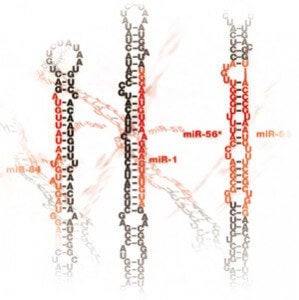
I can’t believe the number of things you can find out about yourself by spitting in a cup. A recent study at UCLA demonstrated that certain strands of micro RNA (miRNA) found in your saliva could indicate the presence of oral carcinoma. The work was published in Clinical Cancer Research, a journal of the American Association for Cancer Research. Doctors may have found a quick and easy way to routinely scan patients for oral cancer without the need for biopsy, which would mean a better chance of early detection. That’s good news for the tobacco chewers, who make up about 75% of all oral cancer patients in the US.
As with so many cancers, oral carcinoma is very survivable if found early. The problem is that low public awareness keeps most people from seeking a routine examination, even if they partake in high risk behavior. While current diagnosis for oral cancer is actually quite quick and painless, the measurements of miRNA in spit could allow the test to be taken along with others. Already we’ve seen how breathalysers can detect lung cancer. Perhaps all our cancer risks may one day be assessed just by opening our mouths.
There’s been a glut of research on how miRNA could be used as cancer indicators in different places throughout the body. Cancer cells seem to have a tough time regulating and using miRNA, and so miRNA provides a unique look into the spread of carcinoma. These short segments of genetic information (each only about 20 nucleotides long) help regulate cell activity and access cell behavior. Unlike other forms of RNA, microRNA isn’t transcribed into proteins.
The UCLA study was relatively small: just 50 cancer patients and 50 control patients. Doctors were able to identify 314 examples of miRNA, but only 50 of these seemed to be worth studying. Two, miRNA-125a and miRNA-200a demonstrated drastically lower rates in the cancer patients. They’re absence may one day be used as a sign that someone has active oral cancer. However, a larger and much longer study is needed before these miRNA strands can become reliable indicators.
Whether or not further oral cancer studies successfully find connections between miRNA and carcinoma, saliva is definitely a useful diagnostic tool. Spit is the next urine. 23andMe can search your DNA from a vial of saliva, helping you determine if you have genetic markers that indicate proclivities to major diseases. Next to using a smart toilet, this type of data collection seems relatively classy. If spitting into a cup could help save my life, I’m ready to do so. I can see the slogans now:
Hock for your health!
Don’t be a fool, test your drool.
Spit, it saliva-saver.


